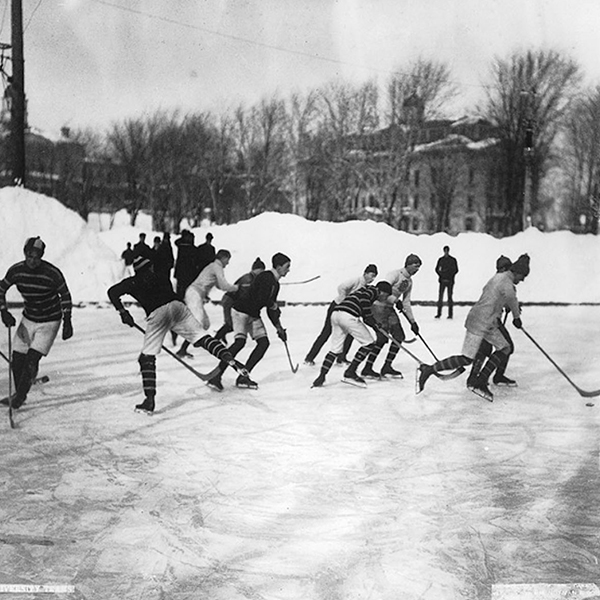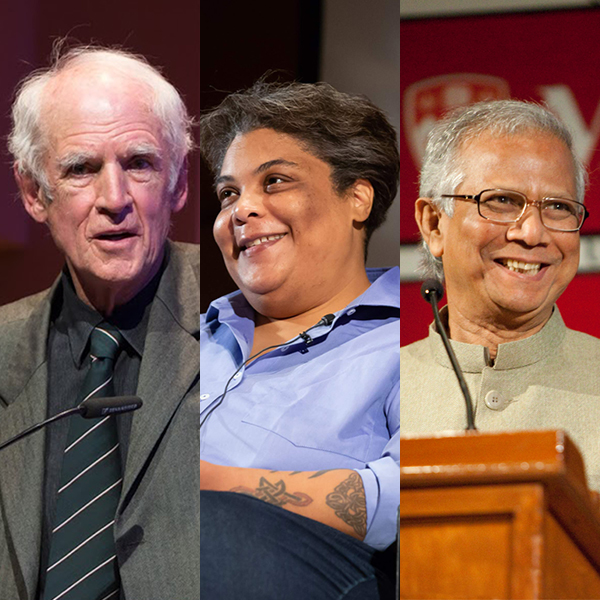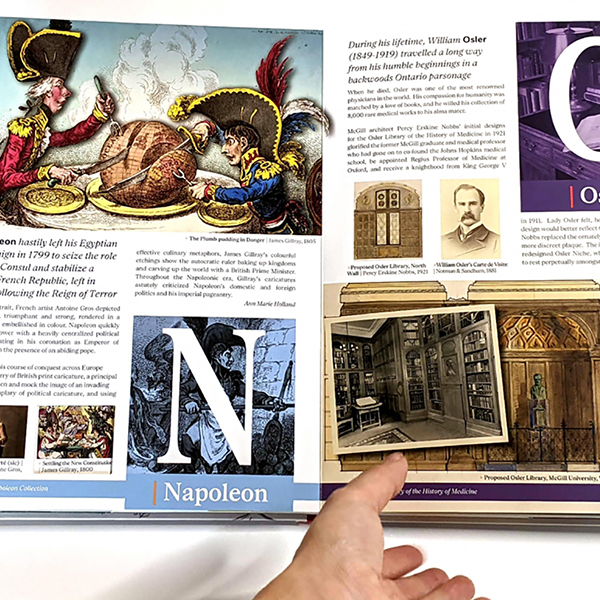A botanist and pioneering geneticist, Carrie Derick, BA1890, achieved impressive firsts in her trailblazing professional life.
The Clarenceville, Quebec native was the first woman to hold an academic appointment at McGill, and later achieved a McGill and Canadian first when she was appointed full professor.
She earned one-third of the salary of her male counterparts, we also learn in Many Women, Many Voices.
The illustrated vignette about Derick is one of the many compelling tales in the newly released book by the McGill Library. It showcases some of the lesser-known materials in its four rare collection units known as “ROAAr”.
Divided into four sections, the book features historical material from Rare Books and Special Collections, the Osler Library of the History of Medicine, the Visual Arts Collection, and the McGill University Archives – all brought to life through the illustrated vignettes.
The Library is a changing place in the 21st century – “increasingly so many of our resources are digital,” notes Jacquelyn Sundberg, MA’13, MIS’17, who works on grants and special projects at the McGill Library and was the book’s project manager. But the ROAAr collections, which are open to the public, are physical and tangible material.
“These are valuable resources and a way to shine a light on them is really to promote them,” Sundberg says.
Sundberg and her collaborators settled on the theme of women for the book, wanting a broad enough topic to include a wide variety of voices and stories. “It seemed like the right moment for that story to come up again. We are in the #MeToo generation and we do have a lot of material on women, including some very surprising things,” says Nathalie Cooke, a professor of English at McGill and associate dean of ROAAr.
One example that Cooke mentions is the vignette about army surgeon Dr. James Miranda Barry who successfully impersonated a man over the course of a lengthy career. Her gender was revealed posthumously. Sir William Osler, MDCM1872, was fascinated by the Barry story and the Osler Collection includes items related to Barry.
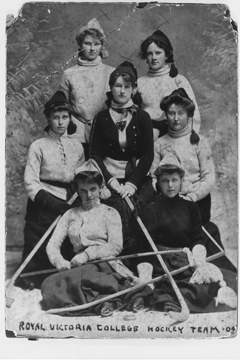
of Royal Victoria College in 1904
Credit: McGill University Archives
“So many of the stories in our collection, they require exploration. They’re just waiting to be discovered,” says Sundberg. “But they do take that level of engagement and work.”
The McGill University Archives section of the book is very McGill- and Montreal-centric, Sundberg says. Those vignettes include Derick, McGill alumna and union activist Madeleine Parent, BA’40, LLD’02, as well as the “Donaldas” as McGill’s early cohorts of female students were called. The nickname sprang from benefactor Donald Smith, president of the Canadian Pacific Railway, whose financial contribution to McGill opened the door for women to study at the University. The accompanying photo shows the first graduating class of Donaldas in 1888.
The book’s contributors include students, professors, doctors, historians and librarians who were given an assignment with an object such as an image.
“In some ways the book can best be described as an invitation because every vignette in it is a way of discovering a specific aspect of the collection. And if you want to learn more, you know where we are,” says Sundberg.
The book includes vignettes about many of the women who made unique contributions to McGill over the years, including Rosalyne Stearn, one of Canada’s most prominent puppeteers in the 1920s, who gave McGill a one-of-a-kind collection of handcrafted puppets, and Dorothy McMurray, the formidable secretary who served as the gatekeeper for four McGill principals.
We also learn about Lady Elizabeth Symonds Gwillim, a wildlife artist whose “remarkable works remained unpublished and underappreciated”, the vignette says, until Dr. Casey Wood, who helped build two major library collections at McGill, discovered them in 1925 in an antique shop in London and acquired them for the University.
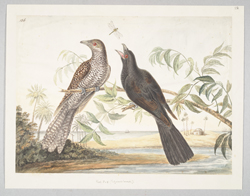
by Elizabeth Gwillim (1763-1807).
ROAAr has printed notecards with images from Many Women, Many Voices, and Cooke says they are going to start developing products based on materials and beautiful images in the collections that will be available for sale.
They want to encourage the community to explore the collections and take pride in them.
“This is one of the oldest collections in Canada. It’s almost 200 years old. Can you imagine what we have? It’s really exciting,” Cooke says.
Material from the rare collection units also gets shared at “ROAAr on the Road” events.“We’re deliberately taking some of our rare material out into the community because we want the Montreal community to understand that it’s their material as well, it’s not just ours,” says Cooke.
